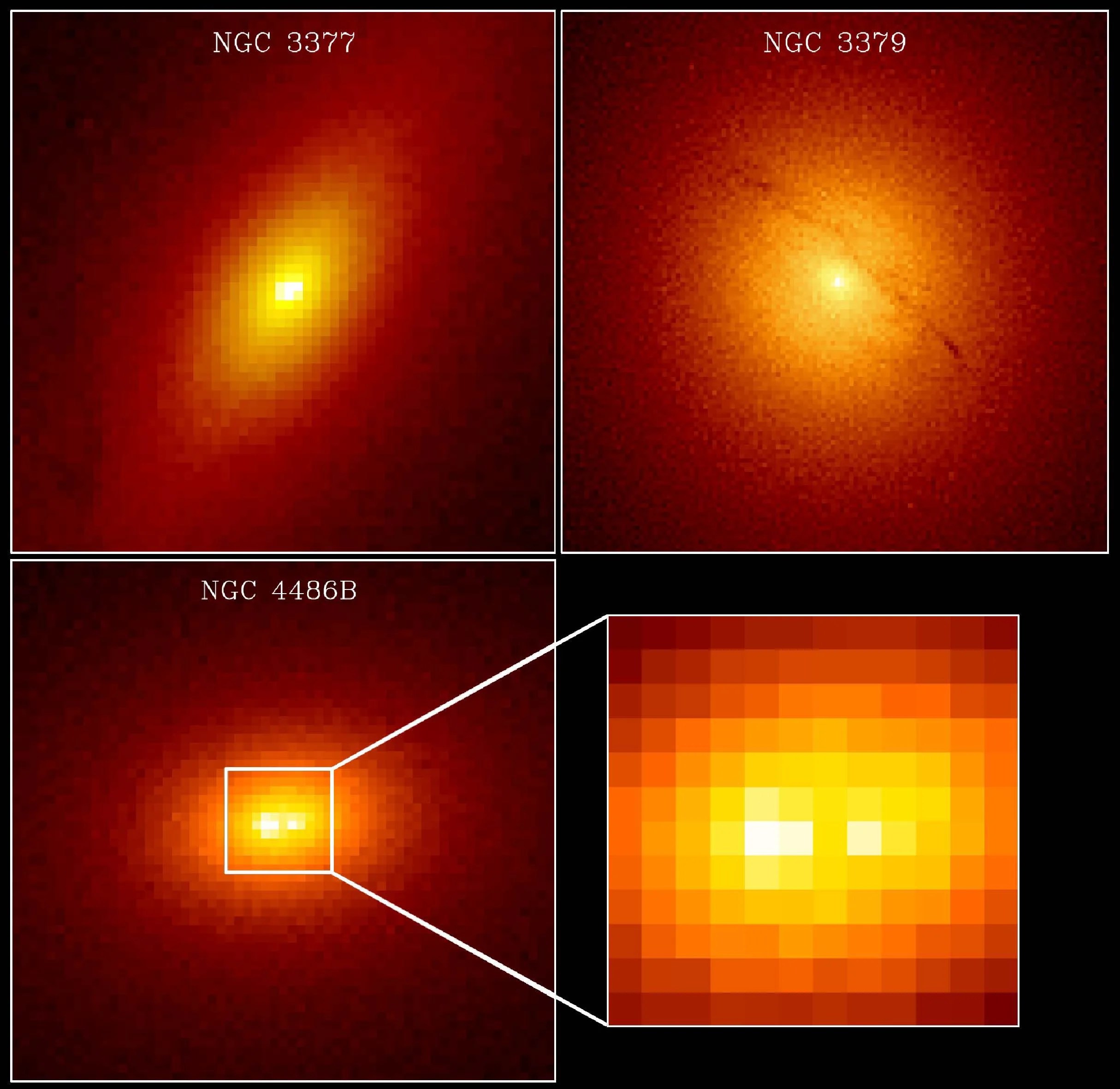
Hubble Observes the Centers of Galaxies Looking for Black Holes
Combining images with data from Hubble’s spectrographs, researchers have peered into the center of many galaxies and established the existence of large black holes. These massive black holes surround themselves with luminous stars and gas, which are visible as bright knots. In a census performed by Hubble in the late 1990s, galaxies NGC 3379 and NGC 3377 were found to have black holes that “weighed in” at 50 million and over 100 million solar masses, respectively, and NGC 4486B was revealed to have a double nucleus at its core.
Credits: Karl Gebhardt (University of Michigan), Tod Lauer (NOAO) and NASA
Image CreditKarl Gebhardt (University of Michigan), Tod Lauer (NOAO) and NASA
Size640x622px
